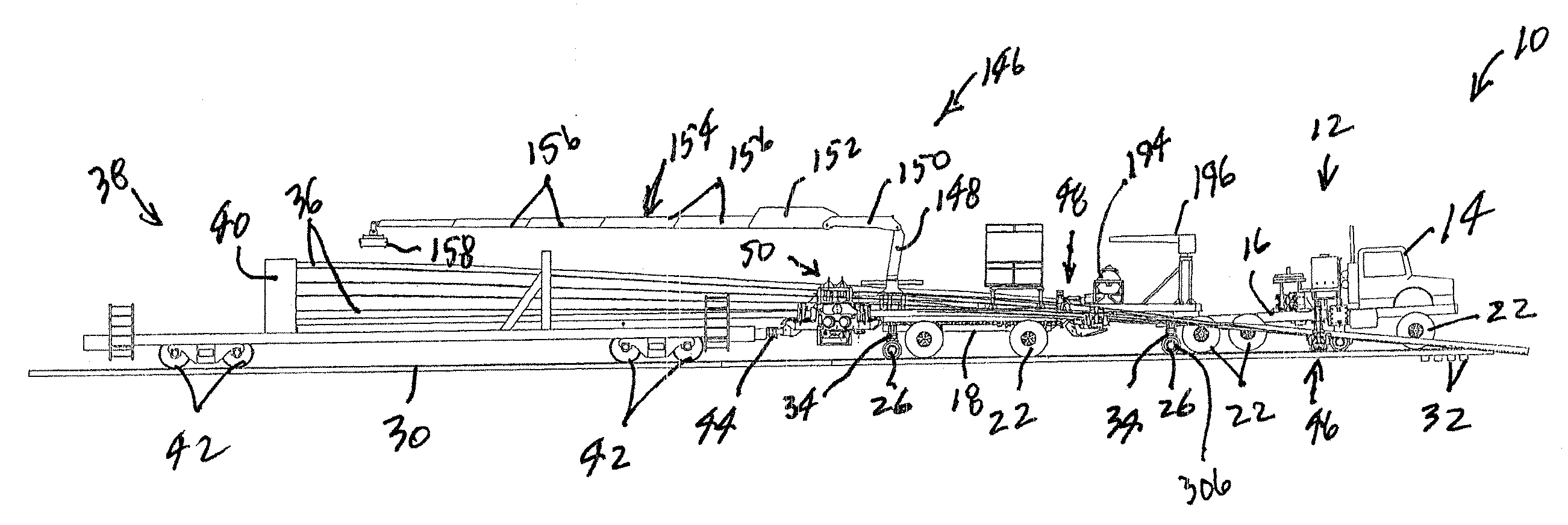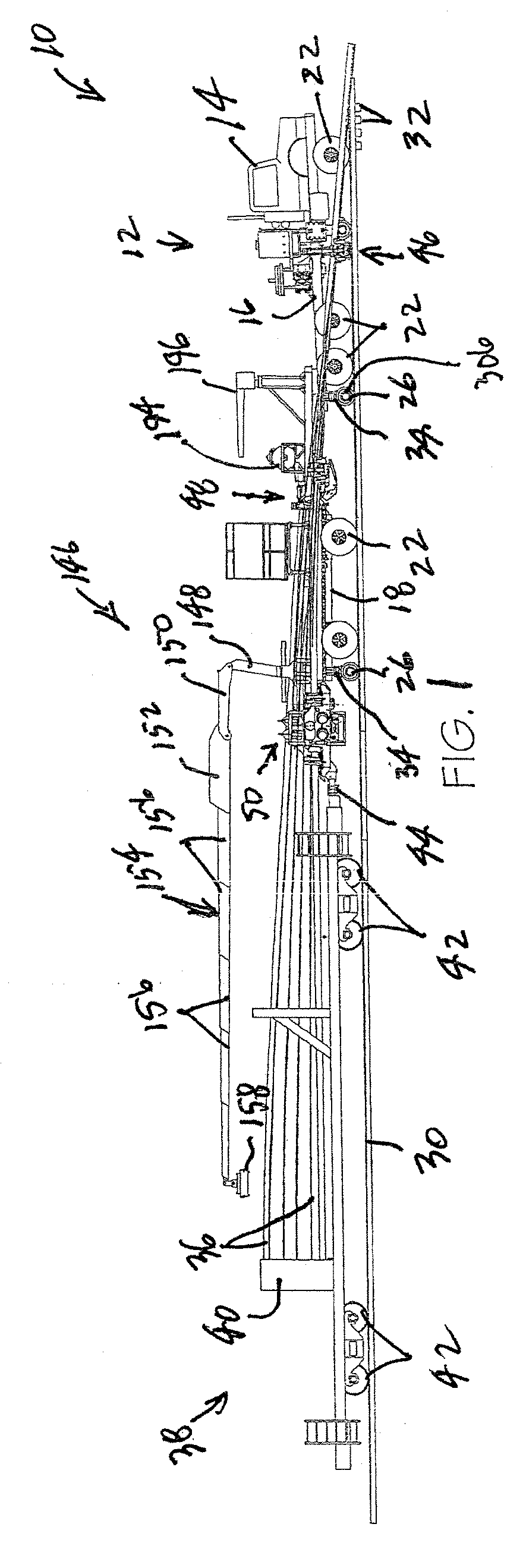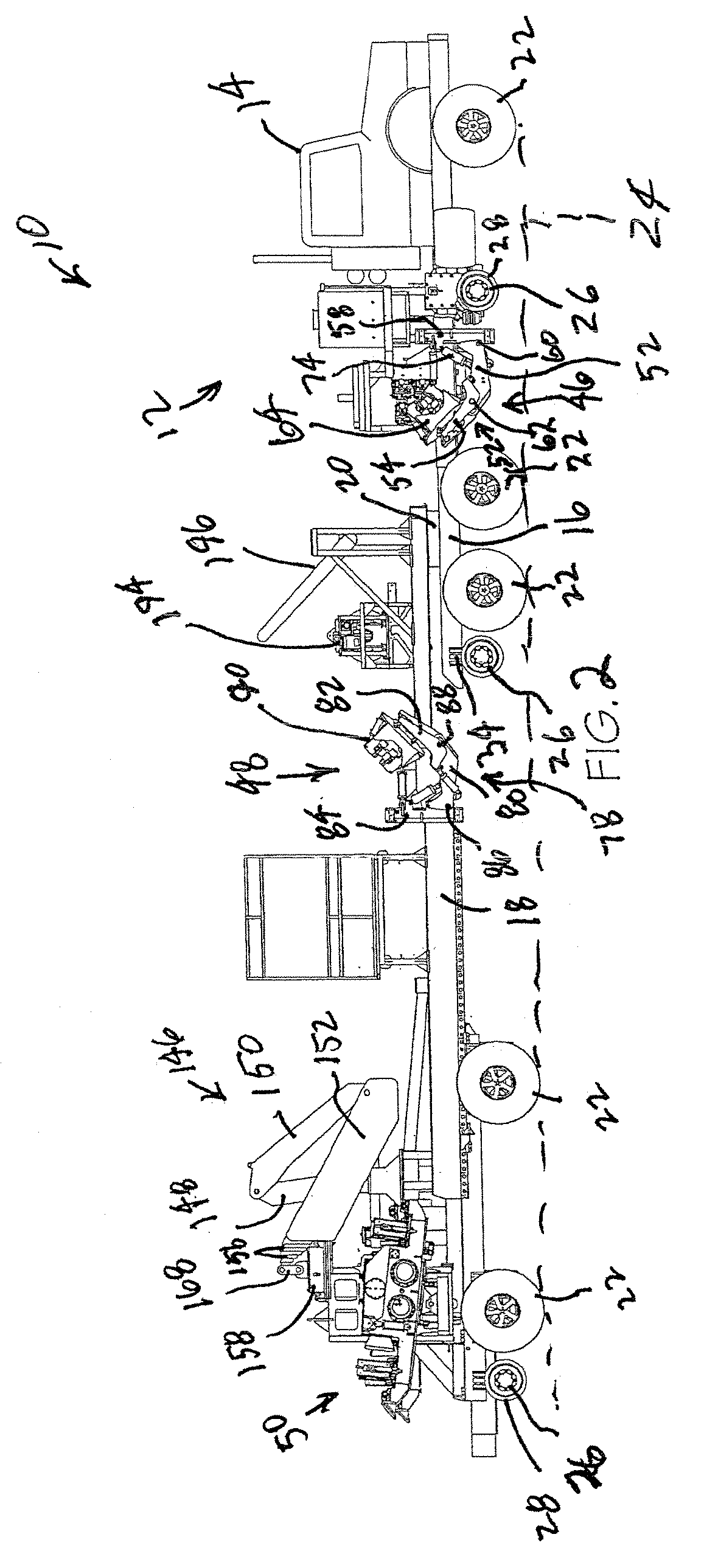Rail Threading Mechanism
a threading mechanism and rail technology, applied in the direction of railway track construction, railway tracks, construction, etc., can solve the problems of difficulty in unloading rails, difficult, time-consuming and laborious jobs, and conventional practice problems, and achieve effective and reliable unloading of rails, and the effect of reducing the width of the machin
- Summary
- Abstract
- Description
- Claims
- Application Information
AI Technical Summary
Benefits of technology
Problems solved by technology
Method used
Image
Examples
Embodiment Construction
[0034]Referring now to the drawings in more detail and initially to FIGS. 1 and 2, numeral 10 generally designates a rail unloading machine constructed in accordance with a preferred embodiment of the present invention. The machine 10 includes a self-propelled vehicle 12 having an operator's cab 14 mounted on a rigid frame 16. The vehicle 12 is equipped with a conventional engine for propelling the vehicle, such as a gasoline or diesel engine. The vehicle 12 may be generally in the nature of a conventional tractor such as that commonly included in over the road tractor-trailers. A rear frame 18 is coupled to frame 16 by means of a conventional swivel coupling 20 (FIG. 2).
[0035]The frames 16 and 18 are each equipped with a plurality of conventional wheels and tires 22 of the type used on tractor-trailers for over-the-road travel along a roadway such as the roadway 24 shown in FIG. 2. Each frame 16 and 18 is also equipped with a plurality of flanged rail wheels 26 having flanges 28 on...
PUM
| Property | Measurement | Unit |
|---|---|---|
| lengths | aaaaa | aaaaa |
| rotation | aaaaa | aaaaa |
| time | aaaaa | aaaaa |
Abstract
Description
Claims
Application Information
 Login to View More
Login to View More - R&D
- Intellectual Property
- Life Sciences
- Materials
- Tech Scout
- Unparalleled Data Quality
- Higher Quality Content
- 60% Fewer Hallucinations
Browse by: Latest US Patents, China's latest patents, Technical Efficacy Thesaurus, Application Domain, Technology Topic, Popular Technical Reports.
© 2025 PatSnap. All rights reserved.Legal|Privacy policy|Modern Slavery Act Transparency Statement|Sitemap|About US| Contact US: help@patsnap.com



